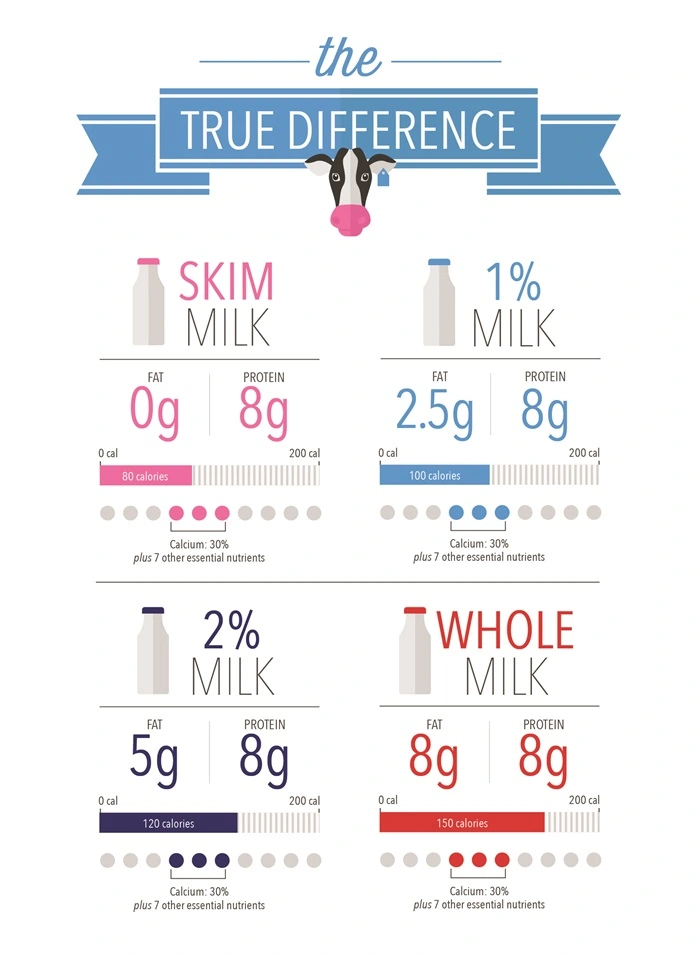The Difference in Milk Fat Percentages: Skim, 1%, 2% and Whole Milk
While growing up, many of us likely knew the milk in our family’s fridge as simply “milk.” However, as we became older, we likely started to recognize the different cap colors and different milk types in the dairy case: whole, skim, 2 percent, and others. (And, here’s a fun fact: Did you know those colors may vary from brand to brand?)
We know that the percentages on milk can be confusing – so we wanted to answer what should be a simple question: What do milk fat percentages mean?
The percentage on your milk container is the amount of fat in the milk by weight. Whole milk is about 3.5 percent fat, and it’s the closest to the way it comes out of the cow. There also are other options for those who have different health needs or taste preferences, including reduced-fat (2 percent), low-fat (1 percent) and fat-free milk. Here’s a quick look at the fat percentages in different types of milk:

Again, the only difference between the milk types is the amount of fat, which also is reflected in total calorie differences among different types of milk. How is this done? Before milk is bottled, all of the fat is removed. It’s then re-added to the milk in the various percentages. None of these milks are watered down.
While the fat content in milk may vary, you can feel good knowing that all cow’s milk contains the same 13 essential nutrients. This is true whether the milk is lactose-free, flavored, or organic.















